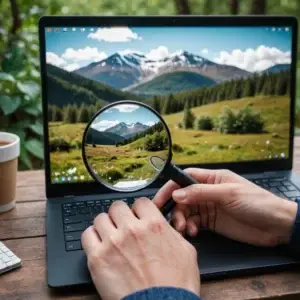The field of computer science has traditionally been dominated by men. However, there have been many women throughout history who have made significant contributions to the field. Despite these epic women often being overlooked and underestimated, they’ve paved the way for future generations of women in technology.
Cyber Ballet is celebrating the many contributions and significant impacts that women have had in the field of computer science during the observance and our celebration of Women’s History Month. We’ve showcased two impactful women last month, Katherine Johnson and Annie Easley during our Black History Month observance and celebration. Others such as Ada Lovelace, who is often considered the world’s first computer programmer and known for her contributions in the 19th century by creating the first algorithm, Bernoulli numbers, for the Analytical Engine. And we would be remiss to forget Shafi Goldwasser, more recently, won the Turing Award in 2012 for her work in cryptography. These accounts and many more, serve as testaments to the continued contributions women have provided to the tech community as they push the boundaries of computer science.
Despite the influences of these women and many others, the field of computer science still has a long way to go in terms of gender equality. Women are underrepresented in tech jobs and often face discrimination and harassment in the workplace. However, the growing awareness of these issues and the increasing number of women pursuing careers in technology are hopeful signs of progress.
Our focus this week is on Grace Hopper, who developed the first compiler and helped create the COBOL programming language. Hopper was also instrumental in the development of the UNIVAC I, the first commercially available computer.

Grace Hopper, a pioneer of computer science, was born in New York City in 1906. She studied mathematics and physics at Vassar College, where she earned a bachelor’s degree in 1928 and a master’s degree in 1930. Afterward, she began teaching mathematics at Vassar College, where she developed an interest in computers.
During World War II, Hopper joined the United States Navy and was assigned to the Bureau of Ordnance Computation Project at Harvard University. She worked on the Harvard Mark I computer, which was one of the first electromechanical computers. Hopper also developed the first compiler, a program that translates code written in one language into another language.
After the war, Hopper continued to work on computers and programming. She helped develop the UNIVAC I, which was the first commercially available computer. She also worked on the COBOL programming language, which is still used today.
Throughout her career, Hopper was a strong advocate for the use of computers in business and government. She believed that computers could help people work more efficiently and make better decisions. She also believed that computers could be used to solve complex problems, such as predicting weather patterns or analyzing financial markets.
Hopper’s contributions to the field of computer science were many. She was the first person to use the term “bug” to describe a computer error. Legend has it that she found a moth inside the Harvard Mark II computer, which was causing it to malfunction. She removed the bug and taped it to a piece of paper, which she then put in a logbook. This is where the term “debugging” comes from.
Hopper also played a key role in the development of computer languages. She believed that computers should be programmed using natural language, rather than the complex codes that were used at the time. She helped develop COBOL, which is still used by businesses and governments around the world.
In addition to her technical achievements, Hopper was also a trailblazer for women in the field of computer science. She was one of the first women to earn a Ph.D. in mathematics from Yale University. She also served as a mentor to many young women in the field, encouraging them to pursue careers in computing.
Hopper received many honors and awards throughout her career, including the National Medal of Technology in 1991. She passed away in 1992, but her legacy lives on. She is remembered as a pioneer in computer science and a champion of innovation and progress.
As we look to the future of computer science, it’s important to recognize the contributions of women who have paved the way for future generations. By learning about their accomplishments and continuing to support women in the field, we can help create a more diverse and inclusive tech industry.



